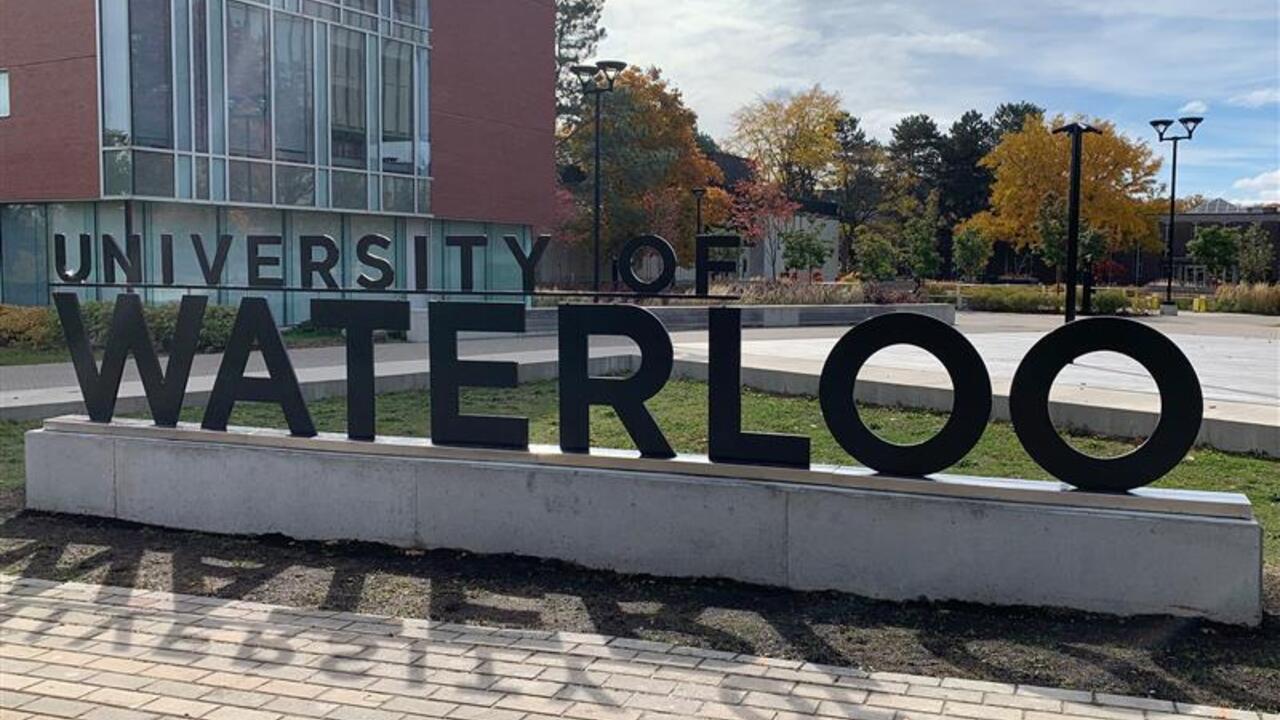
University of Waterloo fuels Ontario spending
For every dollar that the government spends on the University of Waterloo returns nearly nine times that amount in economic impacts to the province.

For every dollar that the government spends on the University of Waterloo returns nearly nine times that amount in economic impacts to the province.
By Media RelationsWATERLOO, Ont. (Wednesday, October 23, 2013) – For every dollar that the Ontario government spends on the University of Waterloo, the university returns nearly nine times that amount in economic impacts to the province, according to a new independent report.
The report, conducted by PricewaterhouseCoopers examines the institution’s role in driving prosperity, also reveals that Waterloo generates more than $2.6 billion in total annual spending impacts and more than 20,000 jobs in Ontario.
“When you look around Waterloo Region – the startups, the tech giants, the innovative centres for research and policy development – you see the University of Waterloo’s influence,” said Feridun Hamdullahpur, president and vice-chancellor of Waterloo. “Our university is an economic engine, powering the growth of Waterloo Region and contributing significantly to Ontario’s ongoing prosperity.”
In 2011, Waterloo received $297 million funding from the Ontario government for its operations. In the same year, Waterloo generated $2.614 billion in spending impacts in Ontario and more than $1.4 billion in labour income for the province.
The total spending impacts of $2.6 billion in Ontario comprises $556 million in direct spending by the University of Waterloo, $265 million in third-party spending, and $642 million in Waterloo Innovation Ecosystem impacts. This spending creates an additional $1.151 billion in indirect and induced economic impacts for a total spending impact of $2.6 billion.
The report concludes that the University of Waterloo contributes $1.5 billion annually to the economy in Waterloo Region. Of the overall spending impact, 46 per cent – $1.2 billion annually – is a result of the university’s role in anchoring the region’s innovation ecosystem and is spending that would not likely occur without the university.
PricewaterhouseCoopers collected data for the study from the university and public sources including Statistics Canada and included a comprehensive survey of companies in Waterloo Region to understand the university’s impact.
“Deep connections with industry, strong support for commercialization of research have made Waterloo a magnet for students, faculty and partners with an entrepreneurial mindset,” said Tim Jackson, vice-president of university relations. “But we’re also attracting companies to this region. International companies such as Google have set up in Waterloo Region to take advantage of the deep talent pool here – and that trend is continuing.”
The survey identified that around half of the 720 companies in the Waterloo Region Innovation Ecosystem said the university was a key factor in their company’s start-up or ongoing operations.
Waterloo spinoff companies represent a diverse range of industries, from information and computing technology (33 per cent), to clean technology (17 per cent), advanced manufacturing (17 per cent), life sciences (17 per cent), and digital media (eight per cent).
“As the report makes clear, Waterloo is a leading Canadian example of the positive impact universities can have when they collaborate with industry and drive innovation, economic growth and prosperity,” said Professor Hamdullahpur. “Our co-op program is a key component of this. With connections to industry across the globe we are creating a powerful profile for this region on a world stage.”
Waterloo operates the largest co-op education program in the world with more than 17,000 co-op students working for 4,500 employers. PricewaterhouseCoopers found that the co-op program is a significant advantage for companies in the Waterloo Region Innovation Ecosystem, given the pervasive labour shortages for high-skilled labour across Canada.
The report also found:
The University of Waterloo commissioned the report. A summary of its findings are available online.

Click here to download a high resolution version of the above infographic.
In just half a century, the University of Waterloo, located at the heart of Canada's technology hub, has become one of Canada's leading comprehensive universities with 35,000 full- and part-time students in undergraduate and graduate programs. Waterloo, as home to the world's largest post-secondary co-operative education program, embraces its connections to the world and encourages enterprising partnerships in learning, research and discovery. In the next decade, the university is committed to building a better future for Canada and the world by championing innovation and collaboration to create solutions relevant to the needs of today and tomorrow. For more information about Waterloo, please visit www.uwaterloo.ca.
-30-
Nick Manning
University of Waterloo
519-888-4451
226-929-7627
nmanning@uwaterloo.ca
www.uwaterloo.ca/news
@uWaterlooNews
Attention broadcasters: Waterloo has facilities to provide broadcast quality audio and video feeds with a double-ender studio. Please contact Nick Manning on 519-888-4451 or 226-929-7627 for more information.

Read more
Velocity pitch competition winners share exciting startup ideas using artificial intelligence and deep tech, showcasing creativity and entrepreneurial prowess

Read more
The new development will serve as a hub for health-care innovation, enhancing services through the merger of Grand River and St. Mary’s hospitals

Read more
Waterloo and AC launch the Global Impact Creator Program to develop sustainable solutions that tackle the world’s most critical issues
The University of Waterloo acknowledges that much of our work takes place on the traditional territory of the Neutral, Anishinaabeg, and Haudenosaunee peoples. Our main campus is situated on the Haldimand Tract, the land granted to the Six Nations that includes six miles on each side of the Grand River. Our active work toward reconciliation takes place across our campuses through research, learning, teaching, and community building, and is co-ordinated within the Office of Indigenous Relations.